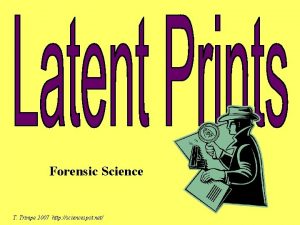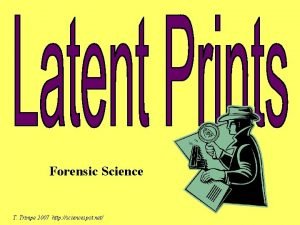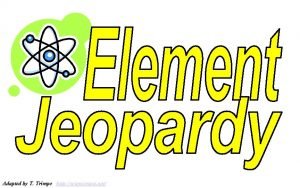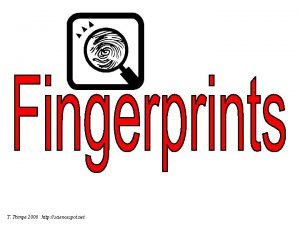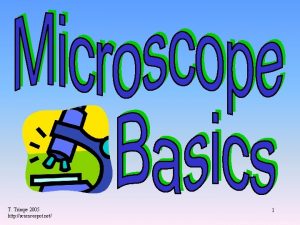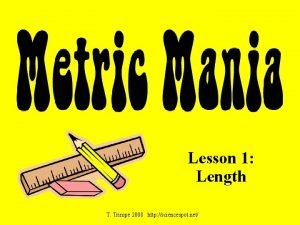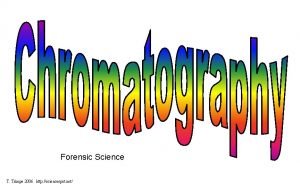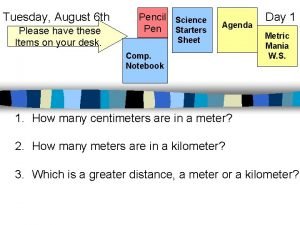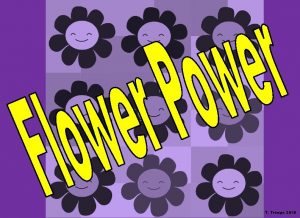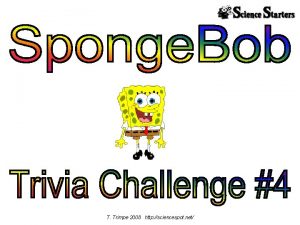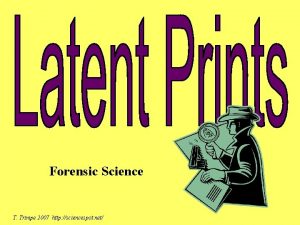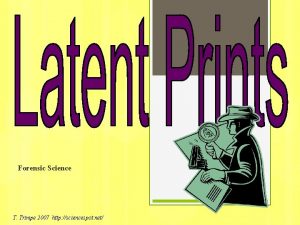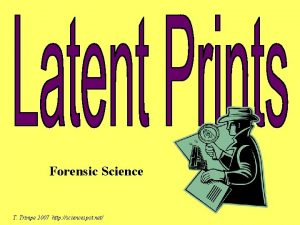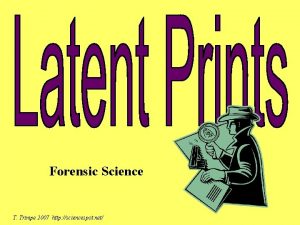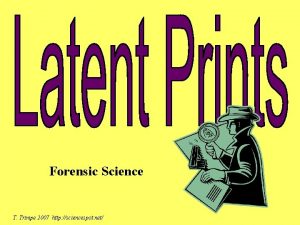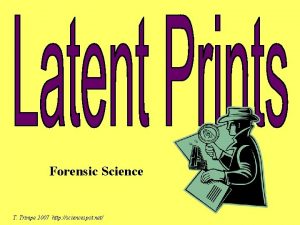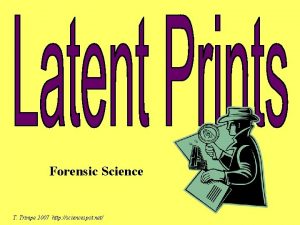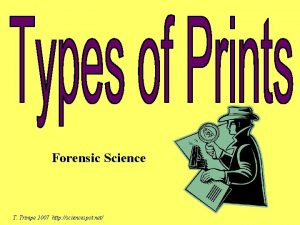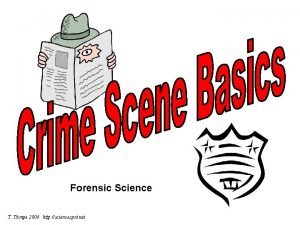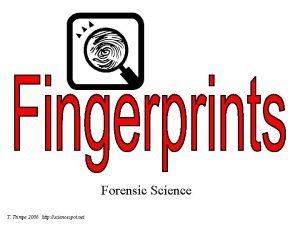Forensic Science T Trimpe 2007 http sciencespot net













- Slides: 13

Forensic Science T. Trimpe 2007 http: //sciencespot. net/

A crime lab can use fingerprints to identify the victim or identify or rule out a suspect. There are several types of prints a CSI might find at a crime scene: TYPES OF FINGERPRINTS found by investigators at the C. S. 1. Patent fingerprints 2. Plastic fingerprints 3. Latent fingerprints

1. Visible or Patent Print • Visible or Patent: Left by the transfer of blood, paint or another fluid or powder onto a surface that is smooth enough to hold the print; evident to the naked eye

2. Plastic Fingerprints • These prints are actual indentations left in some soft material such as clay, putty, or wax.

3. Latent Fingerprints • Sometimes called hidden prints, are caused by the transfer of oils and other body secretions onto a surface. • They can be made visible by dusting with powders or making the fingerprints in some way more visible by using a chemical reaction.

Latent prints are impressions left by friction ridge skin on a surface, such as a tool handle, glass, door, etc. Prints may be collected by revealing them with a dusting of black powder and then lifted with a piece of clear tape. Did you know? Camel hair is the most common animal hair used to make fingerprint brushes. Now many brushes (like the one above) are made out of fiberglass.

Some investigators use fluorescent powder and UV lights to help them find latent prints on multi-colored or dark surfaces. Magnetic powder can also be used to reveal latent prints. This type of powder works better on shiny surfaces or plastic baggies or containers. The cyanoacrylate fuming method (often called the super glue method) is a procedure that is used to develop latent fingerprints on a variety of objects. Ninhydrin is a chemical that bonds with the amino acids in fingerprints and will produce a blue or purple color. It is used to lift prints from surfaces such as paper and cardboard. Click the icon to view the Crime 360 Super Glue Video Top Left: http: //www. stapletonandassociates. com/images/Mag. Powder. jpg Bottom Left: http: //www. ok. gov/osbi/images/ninhydrin%20 print. jpg Bottom Right: http: //www. forensicsrus. com/images/Superglue. Print. jpg

• Iodine: a purple crystal that will sublime into a gas and combine with carbohydrates in latent prints. Will produce a brownish print that will fade quickly unless sprayed with a starch solution. It is used to lift prints off paper or cardboard. • Silver nitrate: Objects can be dipped or sprayed with a silver nitrate solution. The chlorides from salt in perspiration on the print will combine with silver nitrate and produce a black or red print that can be viewed under UV light. Is used to lift prints from Styrofoam or wood surfaces.

Fingerprint Evidence • How are latent fingerprints collected of odd surfaces? SUMMARY

The Future of Fingerprinting • New scanning technologies – Yield detail in minute patterns – Reduce analytical mistakes – Analyze trace elements of objects on the skin • Technologies that recognize patterns in – Retina – Face – Veins in your palm

End of Notes

Directions: 1 - Cover your table with white butcher paper or newspaper. You must dust everything on the paper! 2 - Get a lifting kit from your teacher that contains black powder, brushes, and clear tape. 3 - Press the pad of your right thumb on a CD or glass slide to make a print. Place on the paper covering your table. 4 – Dip a brush lightly into the container of black powder and then tap off the extra on the lid. You only need a very small amount of powder to dust the print. 5 – Hold the brush over the print and rotate it between your thumb and fingers. Use the brush to remove any extra powder. 6 - Use a small piece of clear tape to lift the print and place it in the box on your worksheet. CAUTION: The black powder will be messy and isn’t easy to clean up. Don’t dust anything without permission!

Clean Up 1 – Clean off the CDs or glass slides and put them back in the kit with the brushes and tape. 2 – Have someone help you fold the paper in half and tap it to return the extra black powder to the container. 3 – Put the black powder in the box and have it checked in by your teacher. 4 – Get a towel and “dry” wash the table – especially the edges that weren’t covered with paper. 5 – Get a wet towel to wash off the table and then wipe it with some dry towels. Keep cleaning until all the black powder is off the table!
 T. trimpe 2007 http://sciencespot.net/
T. trimpe 2007 http://sciencespot.net/ T. trimpe 2007 http //sciencespot.net/
T. trimpe 2007 http //sciencespot.net/ T trimpe 2003 http sciencespot net crossword answers
T trimpe 2003 http sciencespot net crossword answers T.trimpe 2006 http sciencespot.net
T.trimpe 2006 http sciencespot.net T. trimpe 2004 http //sciencespot.net/
T. trimpe 2004 http //sciencespot.net/ T. trimpe 2008 http://sciencespot.net/
T. trimpe 2008 http://sciencespot.net/ T. trimpe 2006 http://sciencespot.net/
T. trimpe 2006 http://sciencespot.net/ T.trimpe 2006 http sciencespot.net
T.trimpe 2006 http sciencespot.net Metric mania lesson 2: mass answer key
Metric mania lesson 2: mass answer key Sciencespot
Sciencespot T. trimpe 2010 http://sciencespot.net/
T. trimpe 2010 http://sciencespot.net/ Http //sciencespot.net
Http //sciencespot.net Http sciencespot net
Http sciencespot net Ginarvetosti
Ginarvetosti
